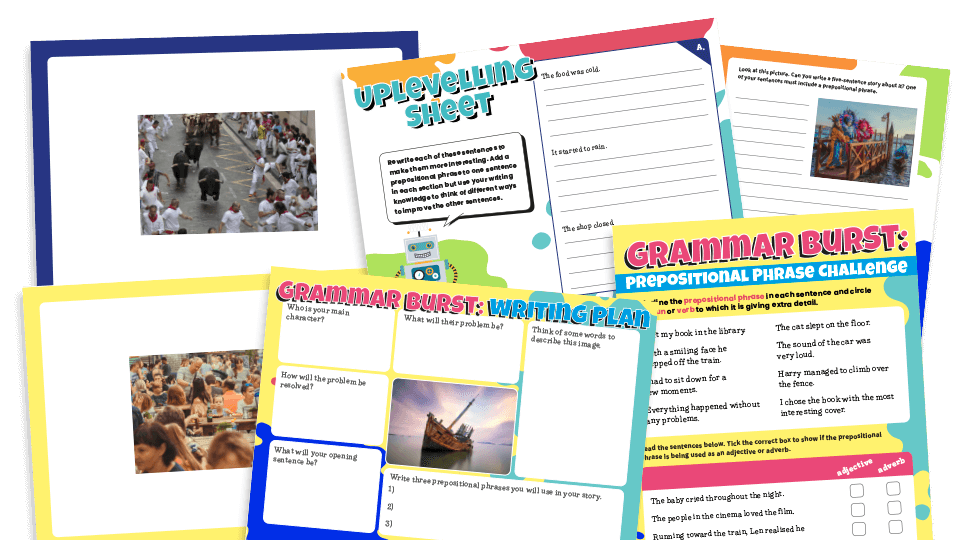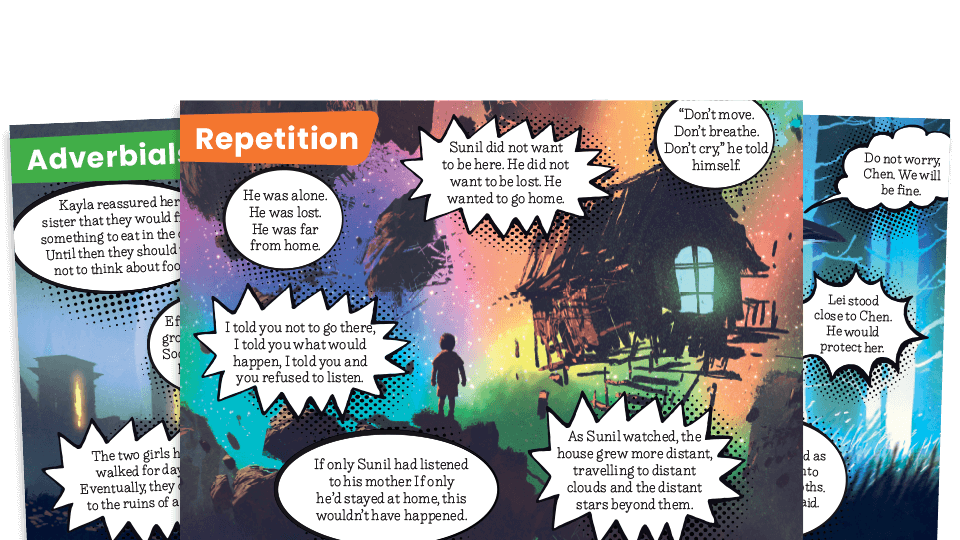In the beginning, there was the adverbial phrase. In fact, they could be in the beginning, in the end, in the middle or anywhere you like.
Adverbial phrases are one of the most useful tools of sentence construction as they do so much to glue our writing together and keep the ideas flowing. Most of us use them all the time in both spoken and written English, often without thinking about them.
The trouble is, the national curriculum wants our pupils to think about them, so we need to be able to teach them.
Fortunately, we have some ideas to help you teach them with confidence.
Adverb or adverbial? What is an adverbial?
No doubt you're already aware, but just in case you needed reminding, an adverb is a word that modifies a verb, typically by describing how, when or where the action is being performed.
The definition of an adverbial, then, is simply a word or phrase that performs the same function.
So, in case your next question was going to be, “What is an adverbial phrase?” the answer is: an adverbial that is a group of words, rather than a single word, that does the job of an adverb.
And if your pupils are struggling to remember what an adverbial is, there is a fab little set of videos that can be watched under the heading ‘Music to Support Learning’ on YouTube. They feature clear explanations presented as insanely catchy songs – one each for adverbials of frequency, place, manner, time and degree.
Adverbs don’t all end in -ly
There is another thing to clear up about adverbs: they are not words that end in -ly. In an attempt to create mental shortcuts for pupils, there has been a tendency to say that adverbs “often end in -ly,” which is true, strictly speaking.
The trouble is, children might interpret that as “always end in -ly,” which is not as silly as it sounds, but might send you back to square one! Perhaps you’d be better off taking the time to be clear right from the start.
Fronted adverbial and the adverbial phrase
There are different types of adverbial phrases. You'll no doubt have heard of the dreaded fronted adverbial. It’s actually not nearly as bad as it seems, as it’s just an adverbial that goes at the beginning of the sentence.
If it's a group of words, then it’s an adverbial phrase. Once upon a time is a fronted adverbial phrase.
Prepositional phrase
Another specific form of adverbial phrase is the prepositional phrase. As we mentioned earlier, adverbials describe how, where or when an action is performed. Therefore, if the prepositional phrase is modifying the verb, then it's also an adverbial phrase.
For example: She ran to the bus stop.
The phrase to the bus stop is telling you more about the running, specifically where she was running to. To help pupils get their heads around this right from the start, why not try our Year 3 Grammar Burst resource for prepositional phrases?

Using adverbial phrases in writing for cohesion
Adverbials play a key role in holding texts together. There are, of course, other ways of creating cohesion, such as the use of pronouns, conjunctions and repetition, but adverbial phrases are particularly good at it.
For example, when writing a story, you might want to introduce a shift in time or location. Nevertheless, you still want it to be a smooth transition so that the narrative “hangs together,” which is where adverbials come in.
These are excellent ways to create a conceptual bridge between scenes by explaining the shift with adverbial phrases such as “later that day …” or “a few miles away…”
No doubt you and your pupils will be able to think of plenty others. Even so, you can keep this at the front of your class’s minds by displaying our set of posters of cohesive devices, which includes one dedicated to adverbials.

Keep practising adverbial phrases
Although adverbs and ‘sentence starters’ might be introduced in later KS1, the time to really launch into adverbials is LKS2. The sheer variety of ways in which adverbial phrases can be introduced to writing might seem a little daunting, so you might welcome a little help in any given lesson.
A good place to start would be our adverbial phrases resource pack. There is a wealth of activities, model sentence examples and sorting tasks focusing on the use of adverbial phrases for connection purposes.
There are also materials that could be used as table mats or as part of a useful interactive display so that pupils have some good examples to refer to whilst composing their own sentences. And because this is a skill that will continue to benefit them, they could be just as useful for keeping Year 5 and 6 pupils on top of their game.

Adverbial phrases for older pupils
Talking of older children, we also offer a Tricky Grammar Story Starters resource specifically aimed at Year 6 students. This stimulating teaching sequence provides a motivating and memorable image to get a conversation going and kickstart their creativity for a short creative writing task (worksheet provided) through which to demonstrate their dexterity with adverbial phrases.

Adverbial phrase SATs practice
Above everything a teacher does in the classroom looms the prospect of SATs, meaning it’s a good idea to practise test-style questions involving adverbial phrases.
You could spend ages hunting them down through past papers if you like, but you could also save time by drawing on our own examples, especially through our Prepositional Phrases Grammar Burst pack.

At the end of the day, it is up to you how you bring adverbial phrases to life in your classroom, but if you embrace this topic with open arms and take advantage of all the support that is available to you, you have every chance of teaching it with confidence and creativity. Now, how many examples of adverbial phrases can you spot in that last sentence?
Sue Drury qualified as a primary teacher in 1999. Teaching pupils from Year 1 to Year 8, she has held a variety of positions including maths and English subject leader, year leader, and assistant headteacher. Sue has mentored students and NQTs, offering guidance and advice using her years of experience. She created many of Plazoom's literacy resources.